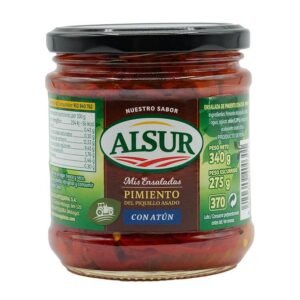La ingesta de atún resulta favorable a una dieta equilibrada debido a su aporte en contenido en proteínas, hierro y niacina.3 Por regla general la cantidad de calorías es superior en los atunes envasados con aceites que los que se han envasado "al natural" (100 gramos de atún en lata contienen 285 calorías, mientras que la misma cantidad de atún fresco presenta 200 calorías).3 En algunos países como España es frecuente ver latas de atún en escabeche. Algunos autores mencionan que a pesar del alto contenido de omega 3 que posee el atún, la mayor parte del mismo se pierde durante las labores de procesado y empaquetado.4 Los ingredientes más habituales son sal, glutamato monosódico, proteína hidrolizada. Se añade a veces especias, ajo, hierbas aromáticas, etc. En algunas ocasiones se acidula con zumo de limón.
El excesivo consumo de atún en lata no es aconsejable debido al aporte de purinas (que el organismo convierte en ácido úrico). Esta ingesta se desaconseja en aquellas personas que padecen de hiperuricemia o gota. El contenido de sal ha preocupado a ciertos sectores de la población con "tensión alta", esta es la razón por la que se comercializa desde comienzos del siglo XXI variantes con bajo contenido en sal. El contenido de colesterol no es bajo (50 mg/100 g), pero no es superior al de otros productos de origen animal. No obstante la presencia de ácidos grasos reduce su incidencia.
Información adicional
| Peso | N/D |
|---|---|
| Cantidades | Pack 16 unidades, Unidad |
| Valor energético | 999 kJ/240 Kcal |
| Grasas | 17,25 g |
| ácidos grasos saturados | 2,04 g |
| Hidratos de carbono | 0,2 g |
| de los cuales azúcares | 0 g |
| Proteínas | 21,01 g |
| Sal | 1,19 g |
| Ingredientes | Atún, aceite de girasol y sal |
| Alérgenos | Pescado |






